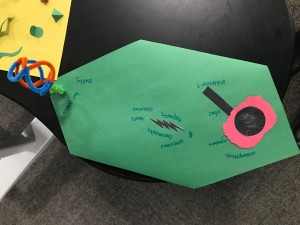
My name is Jaleesa, and I’m a master’s student at the Media Lab, with the Lifelong Kindergarten group. I’m from Tacoma, WA, where I was a community organizer and educator before moving to Cambridge for grad school. I worked with Tacoma Action Collective, I taught high school computer science, and I was the coordinator at the Tacoma Computer Clubhouse.
Last semester I took Technology & Social Change, where my project was #BlackInSTEM: examining the barriers to constructionism in education for Black youth through an intersectional lens. In my design brief I scratch the surface at the race, class, and social barriers that Black and other marginalized youth encounter. For this class, I would like to focus on one of the project ideas from my ideation section, the subscription box. Below is the description:
“In short, the idea is to create a STEM subscription box that is focused on empowering and encouraging marginalized youth to be creators and pursue an education/career in STEM. Each month youth will receive a box that contains materials and a design question/challenge. The box will also include information about the products, and where they can receive more information. The box will not contain instructions, as the focus is on constructing their own ideas and becoming inventors and creators. The box will contain the image and story of a person of color in STEM and their story, including their path into STEM, their struggles, and what they wish they’d known as a teenager. To accompany the box, there will be an online space where youth can share images of what they created, comment on what others created, and ask questions when they get stuck. Both online and in the box will be tips on how to troubleshoot, and messages of encouragement from STEM professionals. The online space will also provide information on where they can be connected to mentors. The combination of the box and online space will give marginalized youth the power to create, inspiration, a place to share, a space to ask questions, and a space that they can call their own. Possible collaborators include Make! Magazine, Arduino, Adafruit, and other companies that are present in the maker movement. There is also potential for community collaboration, through purchasing options. To eliminate the cost barrier, individuals can purchase a subscription for a youth, classroom, or after school program that can’t afford it.
This intervention combines several of my ideas into one, because this issue is complex and deserves a solution that is intersectional. The subscription box provides several interventions, including empowerment, access to engage in constructionist learning, providing mentorship, creating a safe space to share ideas, and eliminates the barrier created by poverty”
My community partner will either be the Computer Clubhouse Network or an individual Clubhouse.